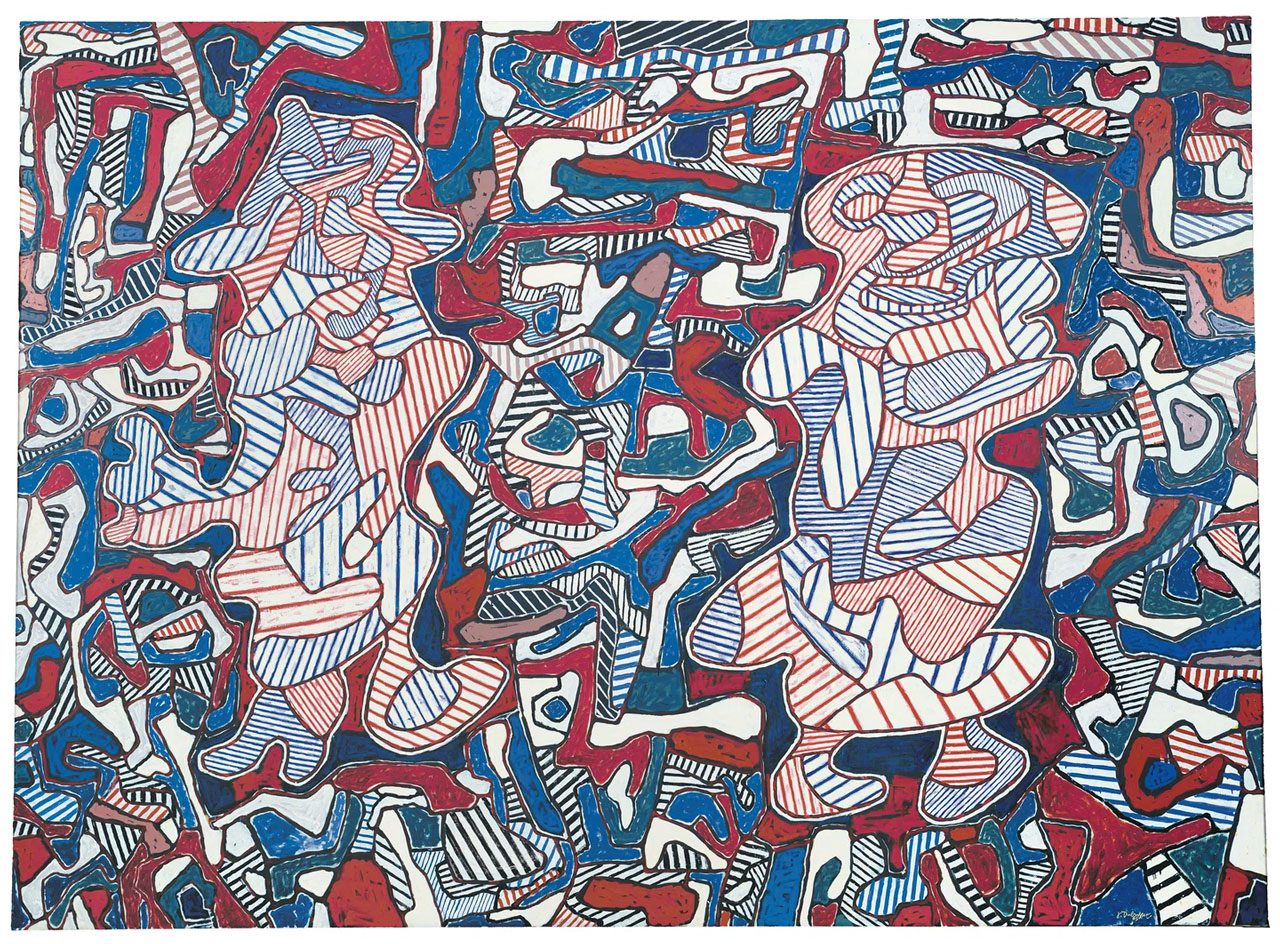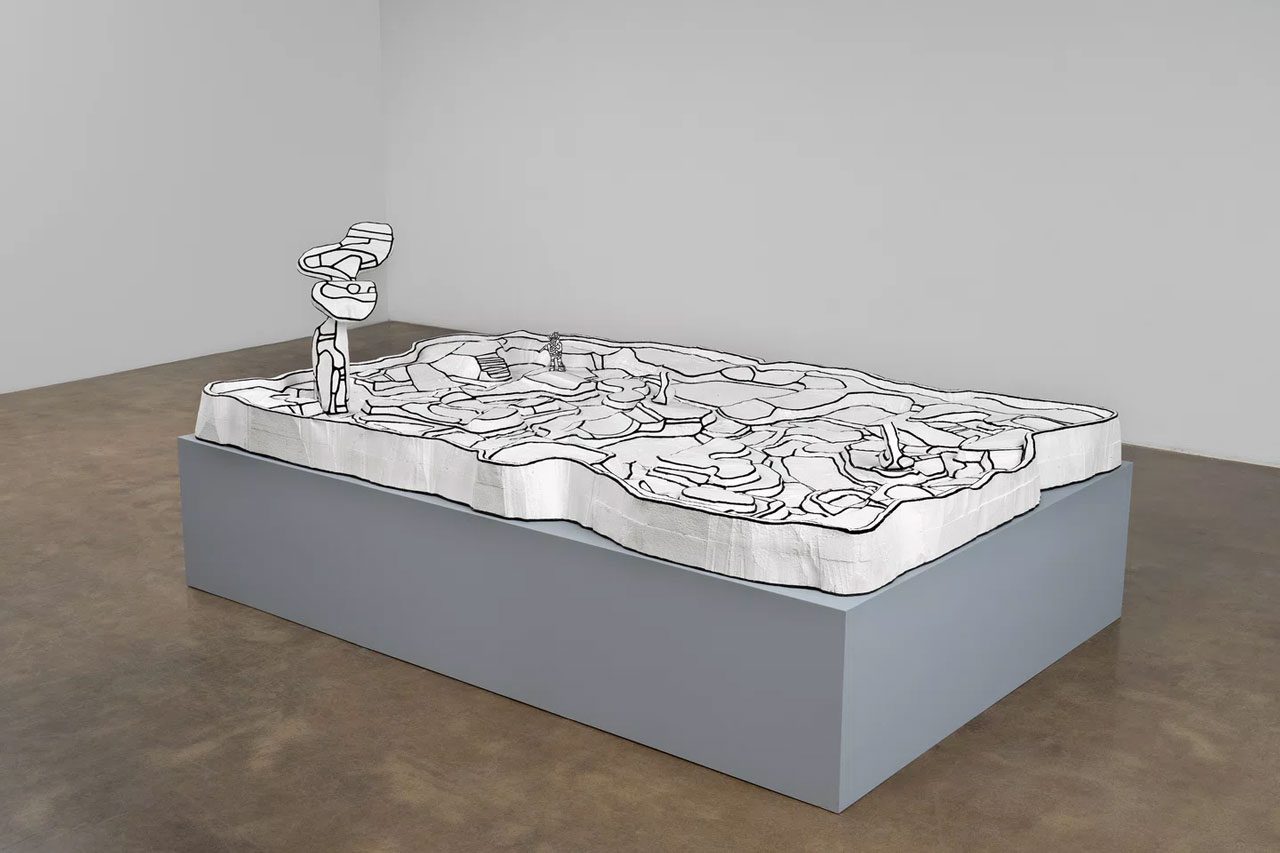PRESENTATION: Jean Dubuffet-The Hourloupe Cycle
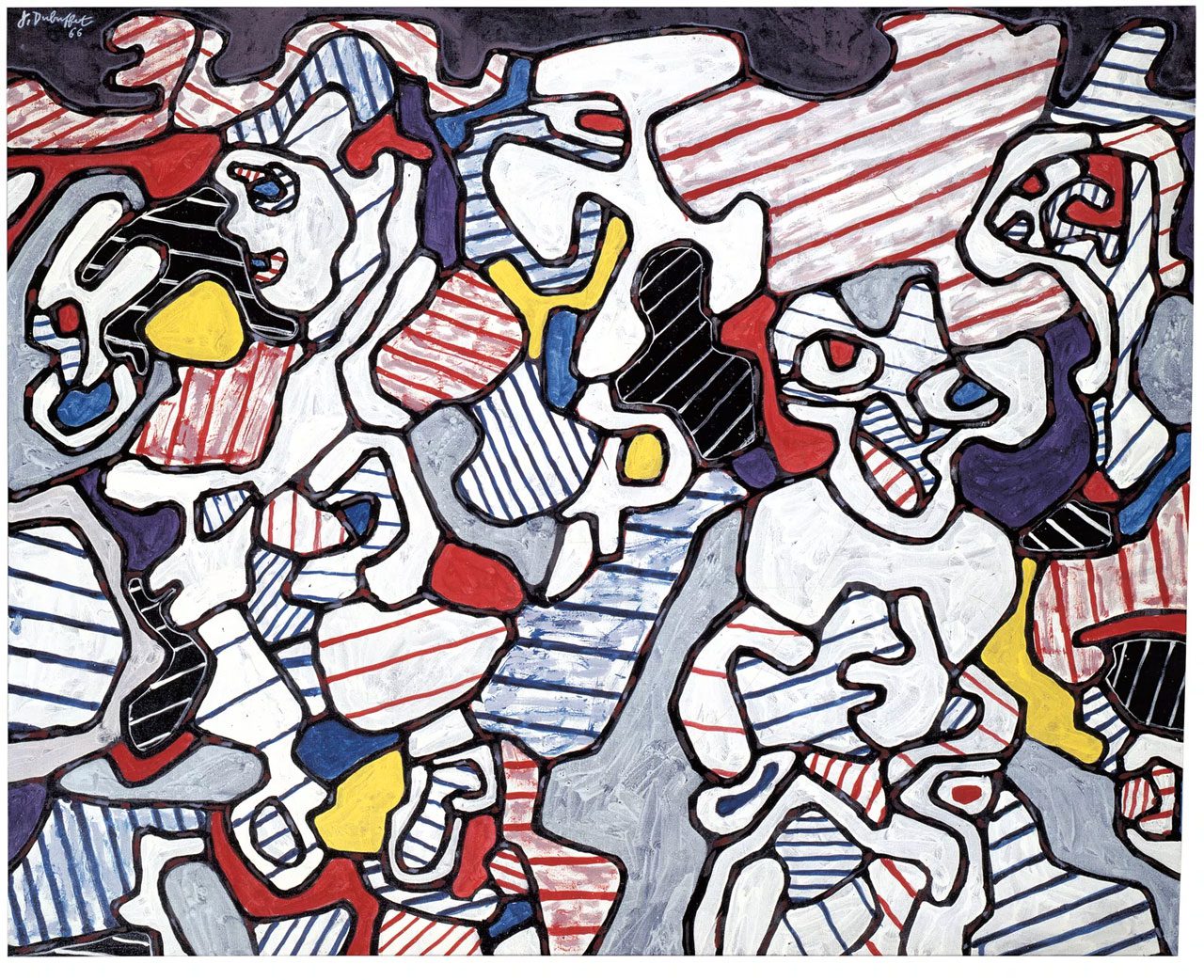 Jean Dubuffet’s work is marked by a rebellious attitude toward prevailing notions of high culture, beauty, and good taste. He began making art in earnest at age 41, after a stint in the army and a successful career as a wine merchant. The next four decades were tremendously prolific: he wrote poetry and theoretical texts, played jazz, experimented widely with art-making materials and techniques, and worked in many mediums, including painting, drawing, printmaking, large-scale outdoor sculpture, and what he called “animated painting”—works bridging painting, sculpture, dance, and theater, and featuring live performers.
Jean Dubuffet’s work is marked by a rebellious attitude toward prevailing notions of high culture, beauty, and good taste. He began making art in earnest at age 41, after a stint in the army and a successful career as a wine merchant. The next four decades were tremendously prolific: he wrote poetry and theoretical texts, played jazz, experimented widely with art-making materials and techniques, and worked in many mediums, including painting, drawing, printmaking, large-scale outdoor sculpture, and what he called “animated painting”—works bridging painting, sculpture, dance, and theater, and featuring live performers.
By Dimitris Lempesis
Photo: Pace Gallery Archive
A major exhibition wit works from Jean Dubuffet’s “Hourloupe” cycle is shown in New York. It brings together a selection of important paintings, sculptures, and architectural models from public and private collections, including the monumental canvas “Nunc Stans”, one of the largest paintings that Dubuffet ever created—on loan from the Guggenheim Museum in New York. One of the great innovators of post-war European painting, Dubuffet looked to the margins of society—to the art of outsiders, mediums, the incarcerated, and the institutionalized—to liberate his own creativity. He coined the term “Art Brut” to describe the raw aesthetic of such outsiders, challenging the conventions of the period. Ahead of his time as both an artist and a philosopher, Dubuffet’s works posed fundamental questions about the nature of reality, leaving an indelible mark on the history of Modernism. With the “Hourloupe”, Dubuffet used his practice as a means to reinvent the everyday in an alternate world. He posited the parallel universe of the “Hourloupe”, which the viewer was invited to imaginatively inhabit, to critique the consensus of reality—as if one might step through a portal in the humdrum existence of waking life into an alternative space of fantasy and possibility. The gallery’s upcoming exhibition in New York will showcase the dictionary of biomorphic forms that Dubuffet invented as part of the series visual language of experience and sensation. Charting the artist’s use of a recurring alphabet of forms across painting, sculpture, and architecture, the show will reflect his lifelong effort to disrupt and refashion our modes of perception. The cycle was the longest lasting series of Dubuffet’s career, comprising works created between 1962 and 1974. Pace, which has represented the artist since 1967, was the first American gallery to exhibit sculptures from L’Hourloupe in its inaugural exhibition of the artist’s work in 1968. A foundational figure in the gallery’s history, Dubuffet has been the subject of more than 20 solo exhibitions at Pace over the course of seven decades. The “Hourloupe” style emerged in the early 1960s from Dubuffet’s Paris Circus period, the result of casual experiments with felt-tip markers. Creating absent-minded doodles in red, black, and blue pen while chatting on the telephone, Dubuffet arrived at a visual language resembling a web of meandering lines. These lines create interlocking shapes of negative space, which lock together like puzzle pieces. Over the course of more than ten years, he produced some of his best-known drawings, paintings, sculptures, and large-scale public environments in this style, comprising the cycle known as L’Hourloupe. Anchoring the works is “Nunc Stans” (1965), a 26-foot-long painting on loan from the collection of the Guggenheim Museum in New York for the first time. This masterpiece contains an inventory of characters and forms that recur throughout the cycle and the exhibition. The work’s title refers to the philosophical concept of eternity—the notion that there is no such thing as past and present, but only an eternal ‘now.’ The exhibition also includes the 1966 painting “Fusil Canardier” in which Dubuffet reimagines a punt gun as an animated creature, suggesting the metamorphic powers of L’Hourloupe to render alive what was previously inanimate. This uncanniness is reflected in the more figurative sculptures from the cycle, three of which will be on view at the gallery. In these large-scale works, including “L’Incivil” (1973–2014) and “Le Facetieux” (1973–2014), faces and limbs are abstracted and contorted but, like “Fusil Canardier”, retain a sense of anatomical familiarity. Sculpture and architecture were central to Dubuffet’s process in the cycle. He realized his sculptural works first in polystyrene, which he produced by cutting through the material with a hot wire, creating maquettes for forms that would then be realized at a larger scale. The exhibition features “Banc-Salon” (1974–2024), a hybrid between a sculpture and an architectural bench, on which visitors are welcomed to sit beneath a sculptural cloud suspended from above. The show also includes the original model of Dubuffet’s monumental, habitable environment, the “Jardin d’email” (1968), which the artist realized for grounds of the Kröller-Müller Museum in the Netherlands in 1974 and remains on view today.
Photo: Jean Dubuffet, Site aux paysannes, March 19, 1966, vinyl paint on canvas, 32″ × 39-1/2″ (81 cm × 100 cm), © Fondation Jean Dubuffet, Courtesy Pace Gallery
Info: Pace Gallery, 540 West 25th Street, New York, NY, USA, Duration: 13/3-26/4/2025, Days & Hours: Tue-Sat 10;00-18:00, www.pacegallery.com/
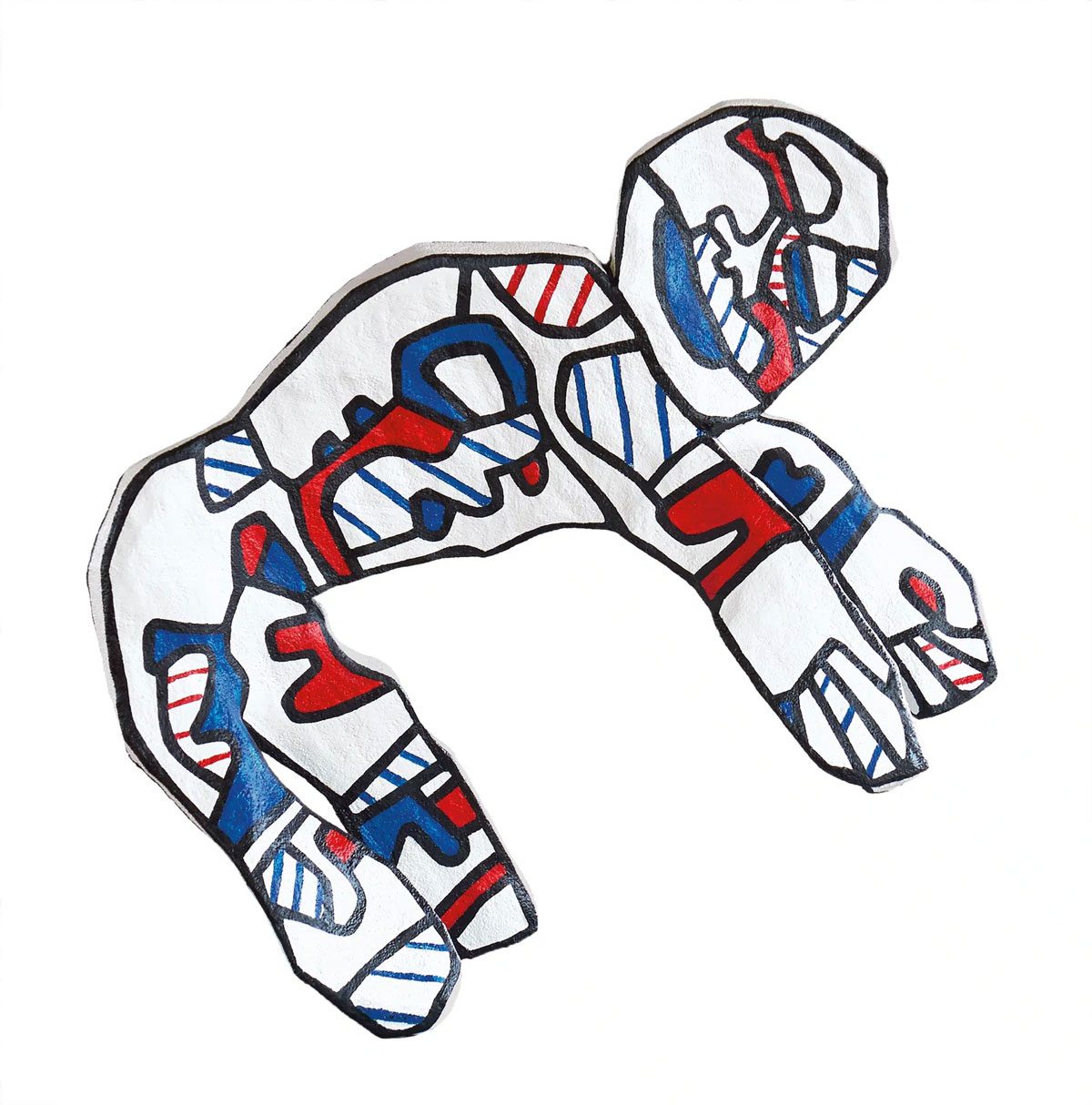
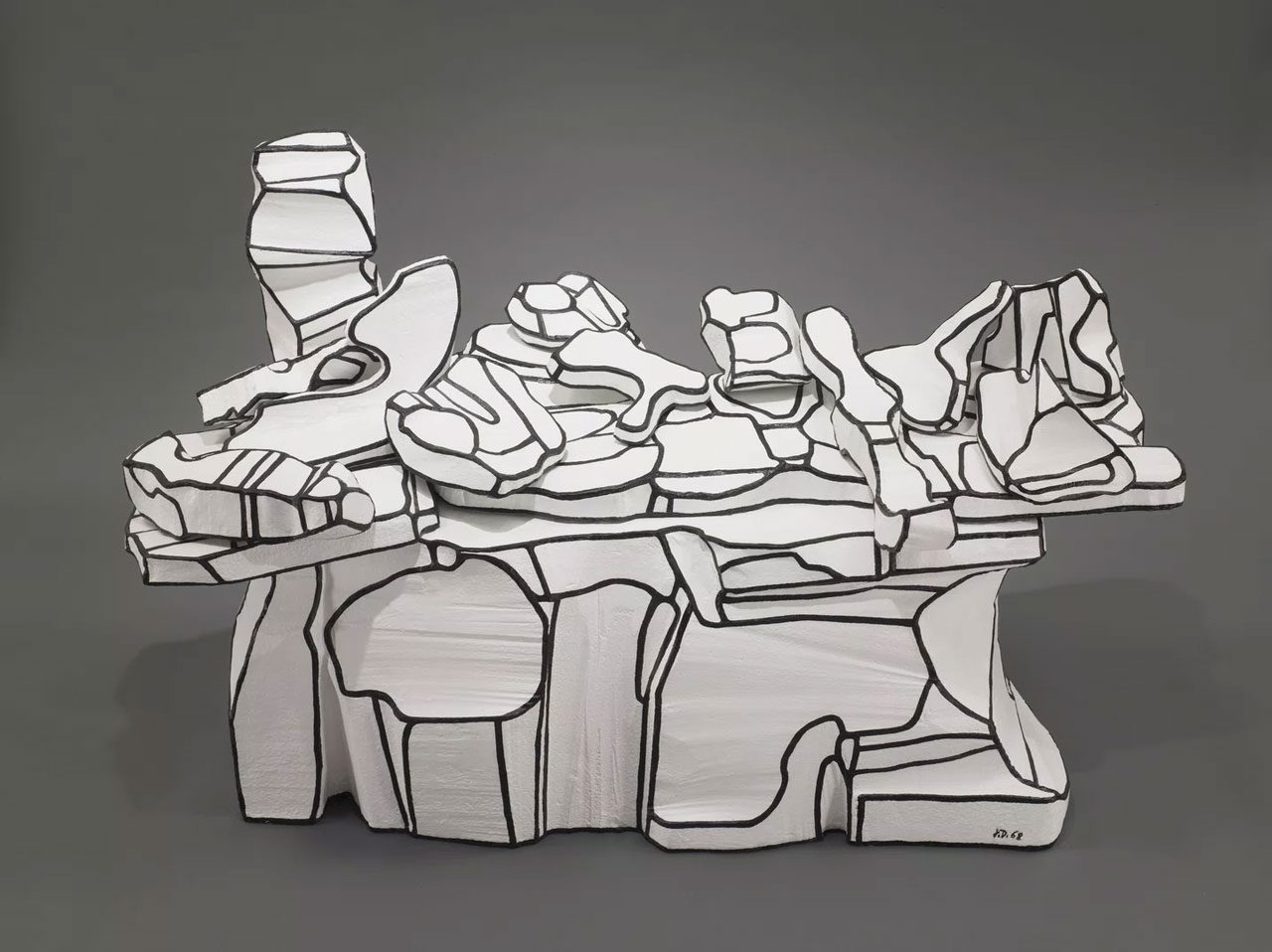
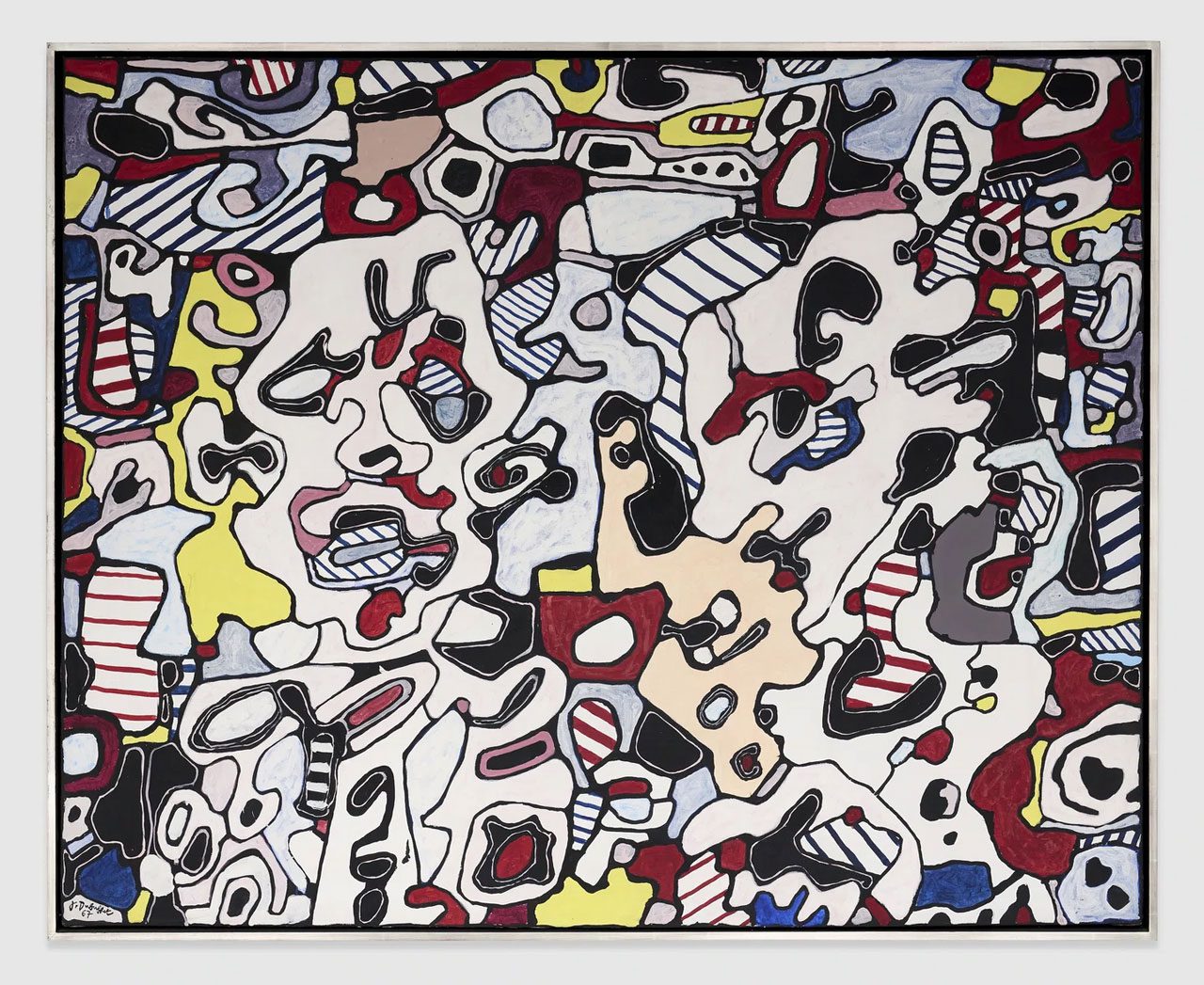
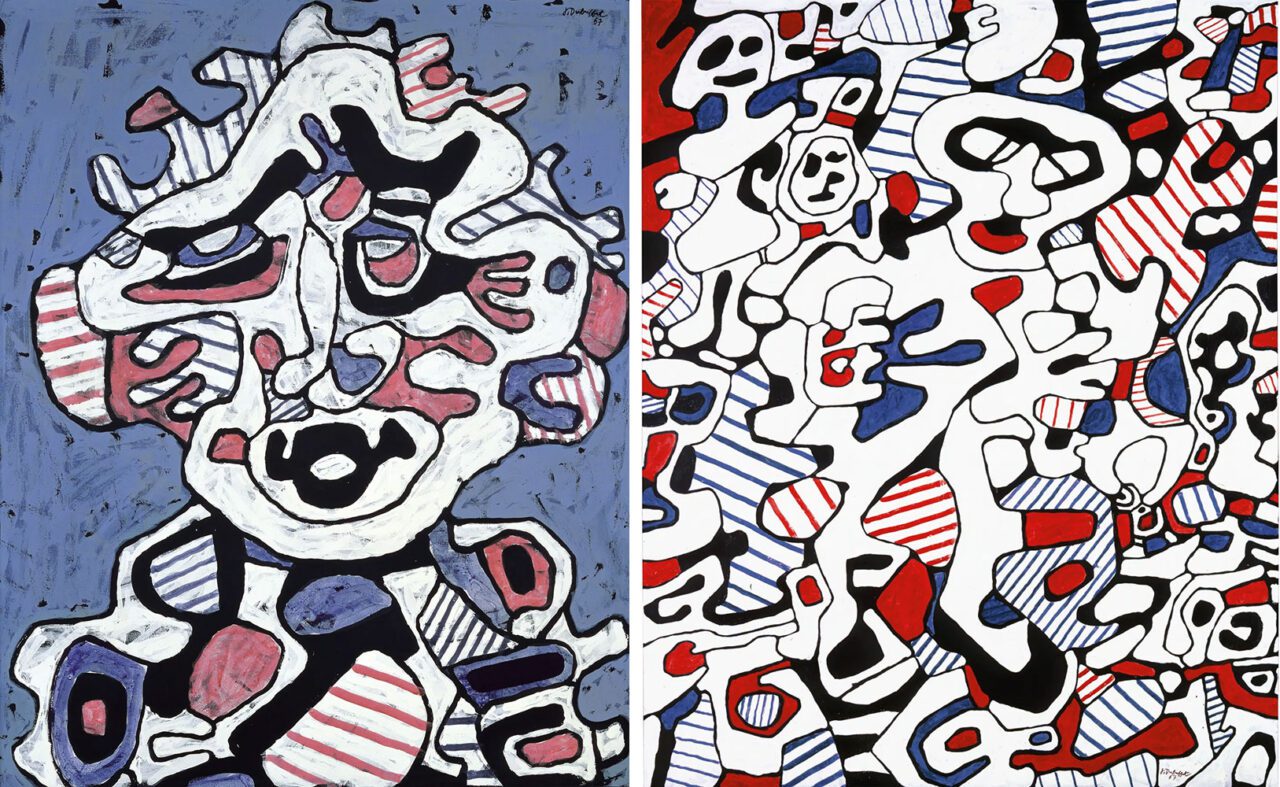
Right : Jean Dubuffet, Dimanche urbain, February 24, 1967, vinyl paint on canvas, 63-3/4″ × 51-1/4″ (162 cm × 130 cm), © Fondation Jean Dubuffet, Courtesy Pace Gallery
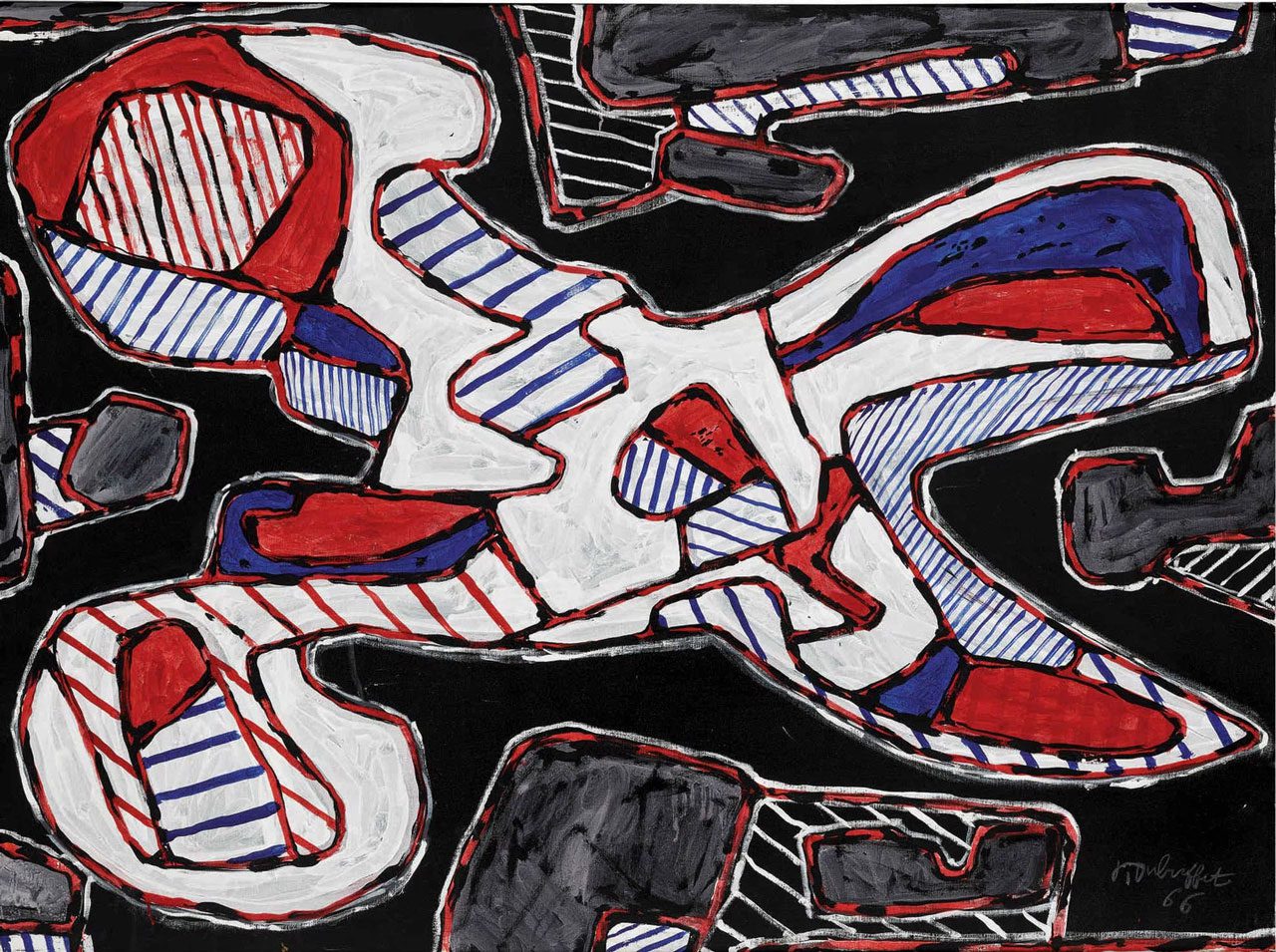
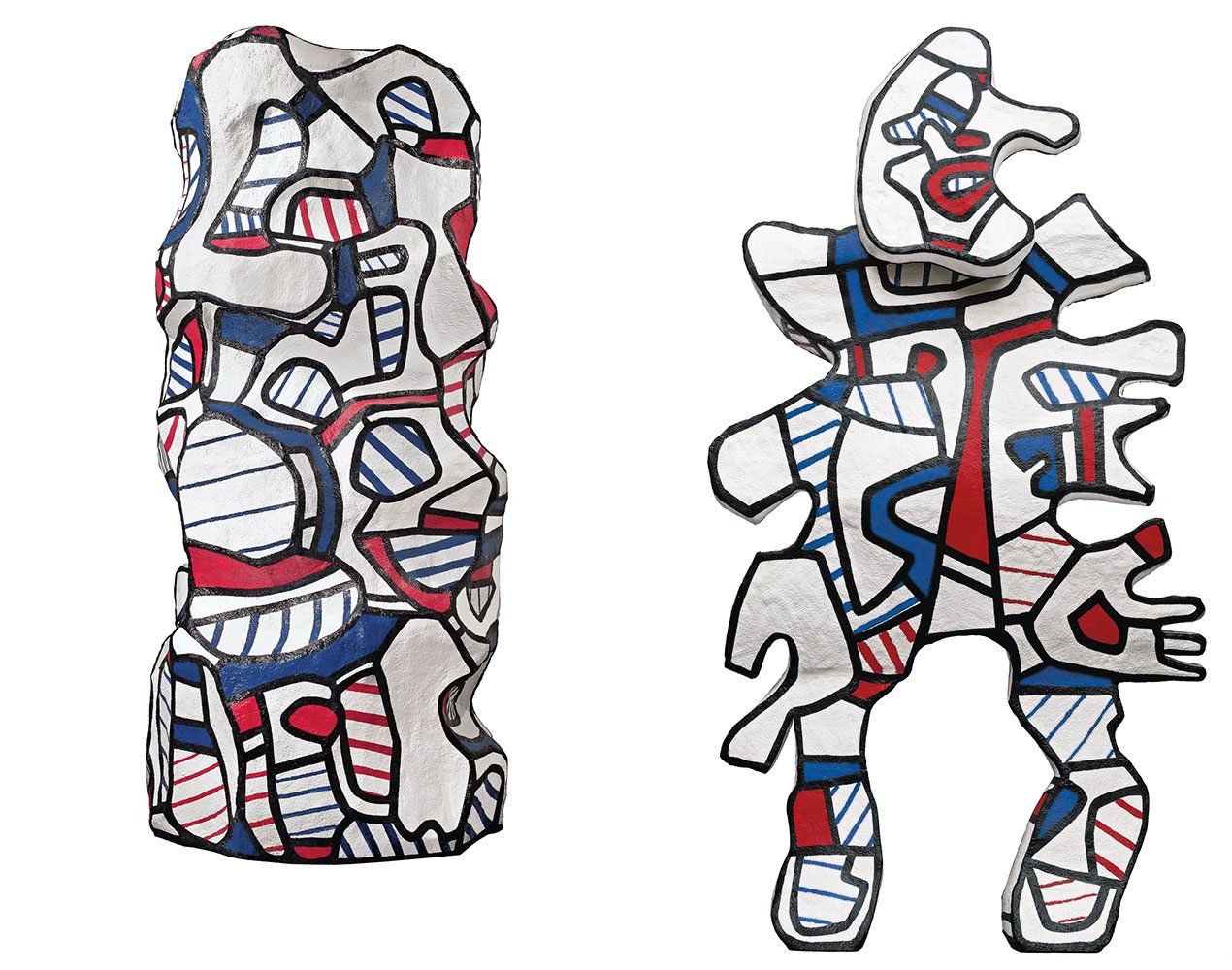
Right : Jean Dubuffet, L’Incivil (after maquette dated 2 August-December 1973), 1973-2014, polyurethane paint on epoxy, 12′ 10-3/4″ x 6′ 11-1/8″ x 2′ 3/8″ (393 cm x 211 cm x 62 cm), © Fondation Jean Dubuffet, Courtesy Pace Gallery
